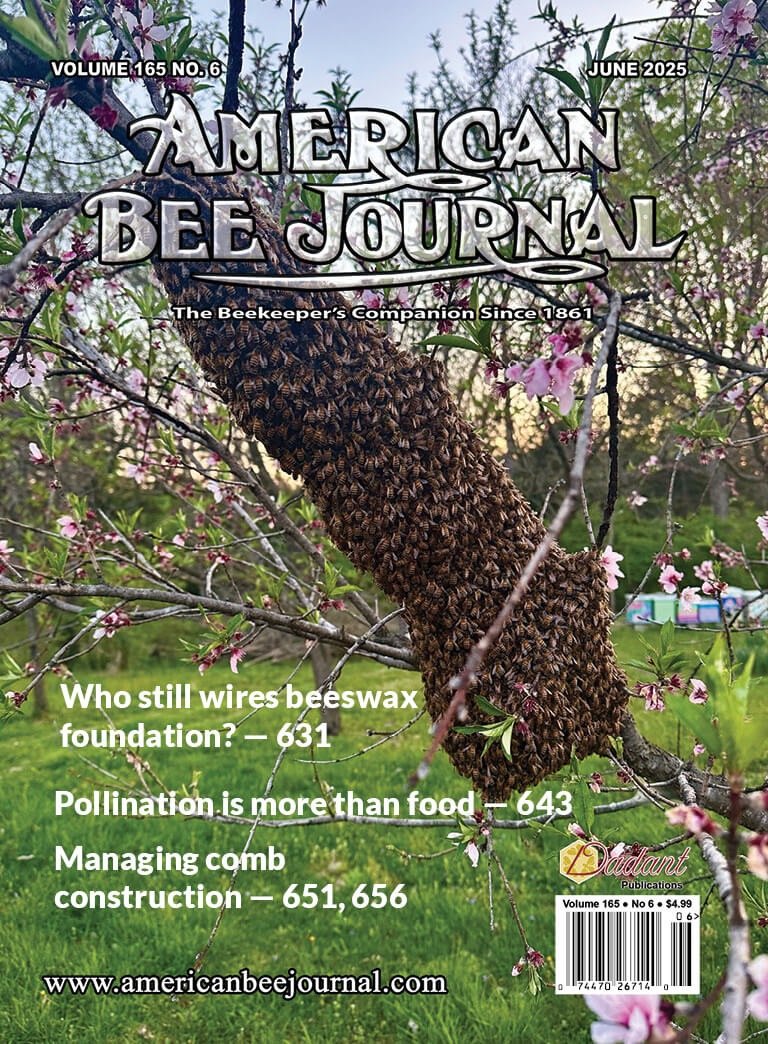Who lands first in a swarm?
I was delighted to read Frank Linton’s article on bivouac traps, something I had not heard of, though I was not completely surprised given its long European history. I’m going to try it, and right now, it’s time!
One question, or rather clarification — though swarms often choose the same spot to bivouac, it was my understanding that when a swarm issues and is swirling around, it is waiting for the queen to land and then, drawn by her pheromone, will gather around her. In other words, the queen chooses the spot where the bivouac swarm clusters. Or does the colony itself choose? Perhaps “scout bees,” like the ones which guide the swarm to its final nesting site, might also guide the queen to the bivouac site. I wonder what Mr. Linton would say? Given all we’ve learned recently about how honey bee colonies make decisions, I wonder if the latter seems the more likely scenario.
David Papke
Frank responds:
David,
First, congratulations on being named 2024 Pennsylvania Beekeeper of the Year. It is a fine honor.
In answer to your question: “What is the process of selecting a bivouac site?” Three experts provide three answers:
- Leo Sharashkin: The queen lands first and the swarm congregates around her. Highly contrasting objects of linear shape are more easily spotted by queens. (Personal communication, February 13, 2024.)
- R.A. Morse & R. Boch: Workers cluster first, and fan Nasonov scent. The scent attracts more workers and the queen. If the queen lands elsewhere, the workers move to her. No queen, no swarm. (Morse & Bock, ’71 Pheronione Concert in Swarming Honey Bees.)
- Tom Seeley: Looks to me like small groups of bees form in several places and then release the assembly pheromone. Then, wherever the queen settles becomes the spot where (eventually) every bee settles. (Personal communication, March 24, 2025.)
There you have it: Three experts, three slightly different opinions. The experiments remain to be done. Perhaps Seeley’s method of investigating swarms’ preferences in nest sites could be used to investigate swarms’ preferences in bivouac sites.
Frank Linton


